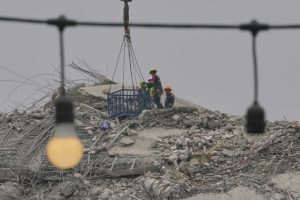
A new study reveals that the devastating 2023 flood in Derna, Libya, was not merely the result of extreme rainfall but was drastically intensified by a major design shortcoming and its resulting collapse of two embankment dams.
Through advanced hydrological modeling and satellite data analysis, researchers found that while Storm Daniel brought heavy rainfall, the catastrophe stemmed from dam failures and flawed risk assessment and communication—amplifying the destruction nearly 20-fold.
The findings highlight the urgent need for improved flood mitigation strategies, especially in dryland regions where high uncertainty in risk analysis, coupled with vulnerable infrastructure, pose an ever-growing threat.
The new collaborative study by Dr. Moshe Armon from the Institute of Earth Sciences at the Hebrew University of Jerusalem, Dr. Yuval Shmilovitz from the Cooperative Institute for Research in Environmental Sciences at the University of Colorado Boulder and Dr. Elad Dente from the School of Environmental Sciences at the University of Haifa, published in Science Advances, sheds light on the catastrophic flood that struck Derna, Libya, in September 2023.
The research challenges the idea that this disaster was an unavoidable natural event, demonstrating that poor infrastructure planning played a crucial role in the devastation.
The study examines the deadly combination of extreme rainfall from Storm Daniel, a Mediterranean tropical-like cyclone, and the structural failure of two embankment dams in Wadi Derna. The research team used a combination of atmospheric reanalysis, satellite data, and hydrological modeling to reconstruct the sequence of events leading to the flood and the destruction in the city of Derna.
Their findings reveal that while the rainfall intensity was high, it was not an unprecedented event. In fact, such storms are expected in the region once every few decades, indicating that this flood was foreseeable.

Hydraulic simulations conducted in the study show that, had the dams not been built, the flood’s impact on the city of Derna would have been significantly lower. Instead, the presence of these dams created a false sense of security, encouraging construction and habitation in vulnerable areas.
When the dams collapsed, the resulting flood surge caused severe destruction, sweeping away entire neighborhoods and claiming thousands of lives.
“Our findings make it clear that the disaster in Derna was not solely the result of extreme weather but a failure in risk management. While storms like Daniel are uncommon, they are not unprecedented,” say the authors.
“If the dams had been properly designed or a different flood prevention strategy had been used and communicated properly to the downstream community, this tragedy could have been significantly mitigated. This disaster is a stark warning that over-reliance on infrastructure without proper risk assessment can have catastrophic consequences.”
The study highlights the urgent need for improved risk assessment and flood mitigation strategies, particularly in dryland regions where the weather is especially variable and extreme events are much larger than the common event.
The researchers emphasize that over-reliance on flood protection infrastructure without proper risk communication can lead to catastrophic failures. Instead, they advocate for nature-based flood prevention solutions and robust early warning systems to better protect communities from similar disasters.
This research serves as a stark reminder of the problems and challenges in relying on infrastructures to prevent flood disasters. Without proactive risk management, proper maintenance, and transparent communication with the public, even well-intentioned flood protection measures can become the very cause of tragedy.
More information:
Moshe Armon, Anatomy of a Foreseeable Disaster: Lessons from the 2023 Dam-Breaching Flood in Derna, Libya, Science Advances (2025). DOI: 10.1126/sciadv.adu2865. www.science.org/doi/10.1126/sciadv.adu2865
Provided by
Hebrew University of Jerusalem
Citation:
How the failure of two dams amplified the Derna Flood tragedy (2025, March 28)
retrieved 28 March 2025
from https://phys.org/news/2025-03-failure-amplified-derna-tragedy.html
This document is subject to copyright. Apart from any fair dealing for the purpose of private study or research, no
part may be reproduced without the written permission. The content is provided for information purposes only.







